From The Schmidt Ocean Institute
3.24.23
Marc A. Fontánez Ortiz
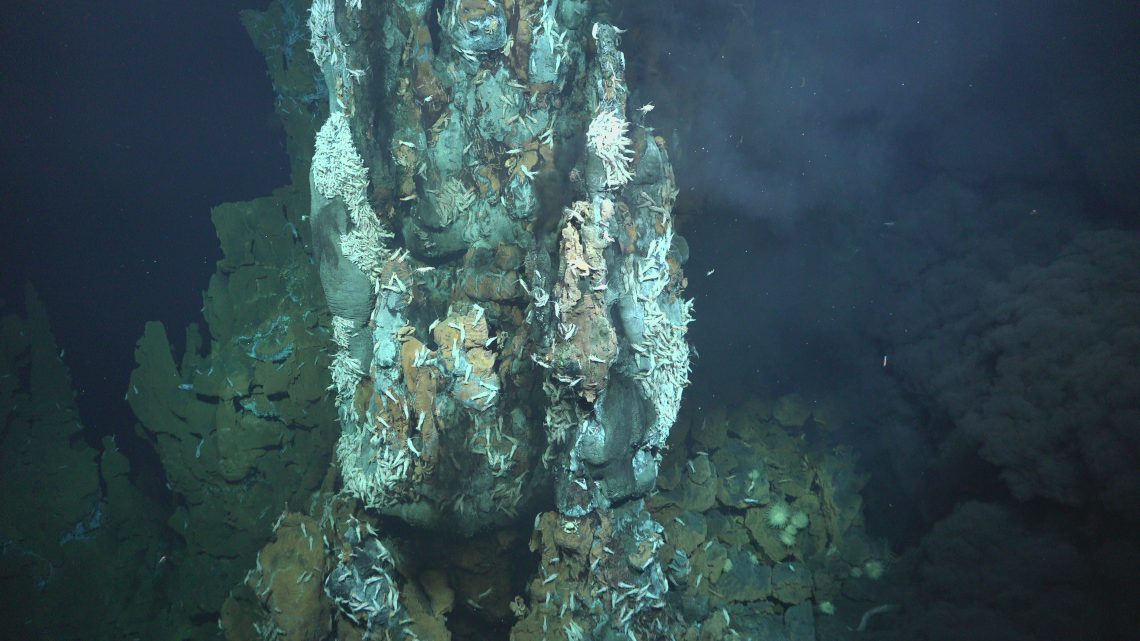
Cruise Log: In Search of Hydrothermal Lost Cities.
“The deep sea is the largest ecosystem on Earth. It harbors a plethora of (bio)geochemical interactions, being the home to different life forms that range from shrimp to unicellular microorganisms. I am a geomicrobiologist who studies energy flow between water-rock-life interactions to understand how the environment shapes life and how life shapes the ecosystem. Therefore, I view the planet as an interconnected system with cooperation or competition between biotic and abiotic reactions. This expedition is one example of this approach, aiming to study the geomorphological structures, chemical signatures, and life in the deep and dark ecosystem hosted in oceanic core complexes from the Mid-Atlantic Ridge.
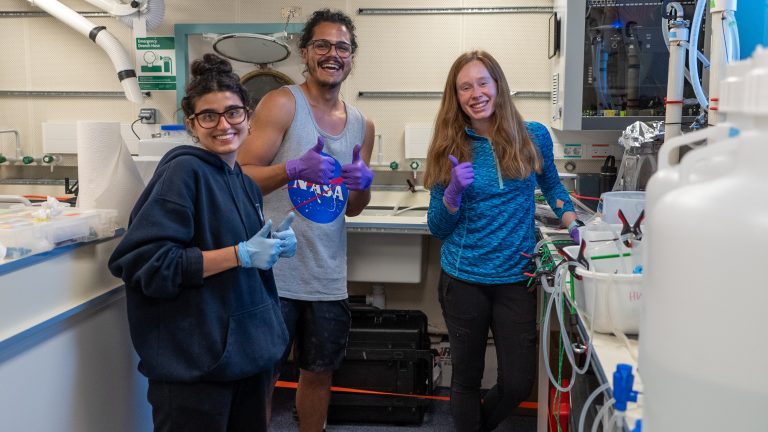
Microbiologist team (from the left, Marc Fontánez, Dr. Bayleigh Benner, Sabrina Elkassas) working on the Tangential Flow Filtration (TFF) system to collect viruses and microbes. Credit: Mónika Naranjo-Shepard.
We are out here searching for serpentinization-driven hydrothermal venting. One feature of such vents is the high pH (10-11) and high concentration of hydrogen. These characteristics are especially interesting for scientists exploring prebiotic organic chemistry, as this highly reducing environment also supports the abiotic transformation of CO2 into CH4 and other small hydrocarbons (organic compounds)—a process thought to be important for the origin of life.
Within this dark biosphere, the mixing of cold bottom seawater (~2-4°C) and warm (<120°C), alkaline hydrothermal fluids provides a thermodynamic disequilibrium, meaning there is an abundance of chemical species that serve as energy-packed substrates for microbial life to thrive. Therefore, microbes that metabolize H2, CH4, and other hydrocarbons can reside in these ecosystems, but only if they can also manage the high pH. Unfortunately, not many examples of oceanic serpentinizing systems have been found. Our knowledge about the microbial community in these ecosystems mainly comes from studies of the Lost City Hydrothermal Field at the Mid-Atlantic Ridge.

Due to the abundance of hydrogen and methane, both methane-producing and methane-consuming microbes have been detected at Lost City, as well as organisms oxidizing sulfide and hydrogen. Our geomicrobiology team is interested in learning more about these extremophiles and has brought a suite of tools to detect these microbes. One way we collected these microbes is by using the ROV SuBastian [below] for vent fluid samples. Using these samples, we hope to grow microbes aboard the ship, analyze their genomic information, and study their activity.
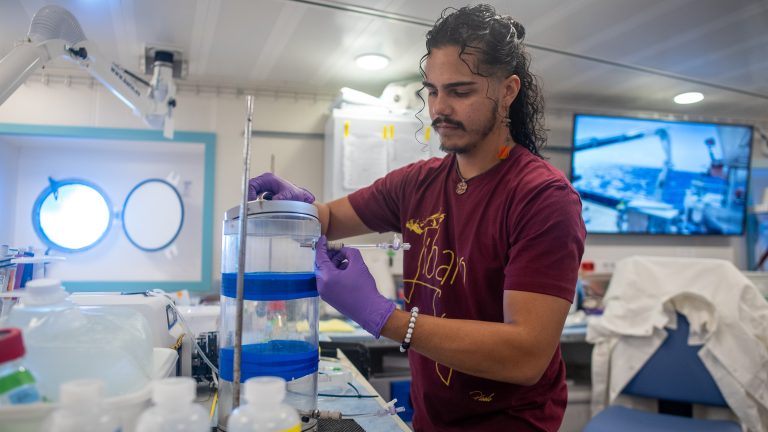
Marc Fontánez preparing the a large volume cylinder to collect hydrothermal fluids with the ROV SuBastian.
Credit: Mónika Naranjo-Shepard.
By studying these unique organisms and their geochemical environment, we can also learn about early Earth and the origin of life. We do not know how life originated, but scientists think highly reducing environments such as deep-sea hydrothermal vents could have created favorable conditions for life to originate. Therefore, serpentinization-driven hydrothermal ecosystems are considered potential early Earth analogous due to their unique chemistry and the potential for abiotic organic synthesis, supplying some of the building blocks for life.
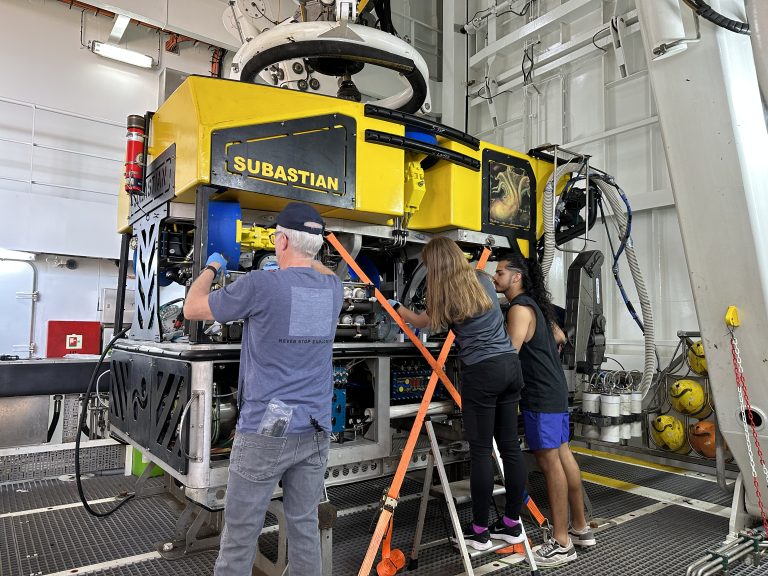
Chief Scientist, David Butterfield, along with Dr. Bayleigh Benner and Marc Fontánez preparing the ROV SuBastian for fluid sampling. Credit: Joan Alfaro-Lucas.
Considering that early Earth may have looked like a soup of molecules, scientists have proposed many different ideas about how life originated. One hypothesis is that ancient forms of genetic information (early precursors to nucleic acids, such as DNA and RNA, for example) were important for the development of unicellular life forms. While our team is studying the microbial communities of these primordial Earth analogs, we are also interested in the viral communities at these sites and how they impact their microbial and animal hosts.
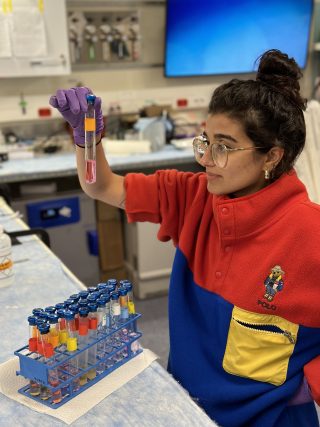
Sabrina Elkassas analyzing the microbial growth experiment from hydrothermal fluids collected in the Puy des Folles seamount with ROB SuBastian. Credit: Bayleigh Benner.
Viruses are the most abundant biological entities found in the ocean, yet we know little about those found in the deep sea. Viruses are small packages of genetic information that require a host organism to survive. As such, it is important to consider the potential role of viruses in the origins of life because they blur the definition of what is alive, but do not quite exhibit the complexity. However, since the discovery of the giant Pandoravirus, opening Pandora’s box quite literally, we continue to learn about the potential of viruses as precursors to life as we know it.
Our combined efforts to study water-rock-life interactions on serpentinization-driven hydrothermal vents will help us understand the regimes in which microbial and viral communities are shaped by their geochemical environment. The insights we gain from this expedition will help us untangle the connections between energy transfer, early Earth environments, and primordial life, serving as a platform to experimentally explore the genesis of life in analog environments within our solar system.”
See the full article here.
Comments are invited and will be appreciated, especially if the reader finds any errors which I can correct. Use “Reply”.
five-ways-keep-your-child-safe-school-shootings
Please help promote STEM in your local schools.
Our Vision
The world’s oceans understood through technological advancement, intelligent observation, and open sharing of information.
 Schmidt Ocean Institute R/V Falkor no longer in service.
Schmidt Ocean Institute R/V Falkor no longer in service.

 Schmidt Ocean Institute ROV Subastian
Schmidt Ocean Institute ROV Subastian
The Schmidt Ocean Institute is a 501(c)(3) private non-profit operating foundation established in March 2009 to advance oceanographic research, discovery, and knowledge, and catalyze sharing of information about the oceans.
Since the Earth’s oceans are a critically endangered and least understood part of the environment, the Institute dedicates its efforts to their comprehensive understanding across intentionally broad scope of research objectives.
Eric and Wendy Schmidt established The Schmidt Ocean Institute in 2009 as a seagoing research facility operator, to support oceanographic research and technology development focusing on accelerating the pace in ocean sciences with operational, technological, and informational innovations. The Institute is devoted to the inspirational vision of our Founders that the advancement of technology and open sharing of information will remain crucial to expanding the understanding of the world’s oceans.
The Schmidt Ocean Institute was established in 2009 by philanthropists Eric and Wendy Schmidt to catalyze the discoveries needed to understand our ocean, sustain life, and ensure the health of our planet. Schmidt Ocean Institute pursues impactful scientific research and intelligent observation, technological advancement, open sharing of information, and public engagement at the highest levels of international excellence. For more information, visit www.schmidtocean.org.

